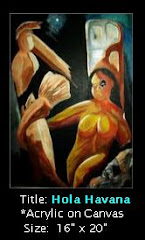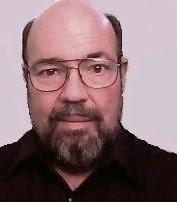Note: Each October since the start of this blog, I’ve featured some of the best (and, admittedly worst!) horror and suspense offerings available from online sources.
Since many of the really `good’ shows are now buried deep in the archives, I thought I’d `resurrect’ a few of my favorites for this Halloween weekend edition.
So a few slightly burnt offerings from the past, humbly offered once more.
Tuesday, October 20, 2009
Although the movies of the 1930s brought horror to mainstream America, with such classics as Dracula, Frankenstein, and King Kong . . . it was the fertile ground of radio drama that produced the most (and arguably some of the best) horror entertainment.
So pervasive were horror and suspense programs on the radio during the 1930s and 1940s, that the outcry of clergy and teachers often reached a fevered pitch. The sordid and gruesome radio fare, from shows like The Inner Sanctum and Lights Out, they feared was going to be the ruination of the country’s youth.
That, and swing music by Glenn Miller and Tommy Dorsey.
I’ve select 3 of my favorite horror/suspense OTR episodes, that will hopefully spur many of you on to explore the thousands of others that have been preserved and archived on the internet.
Unlike the movies, or TV, these episodes require your attention and mental participation. The use of your imagination to fill in the horrifying blanks.
So turn the lights down low, gather your family around the computer, and enjoy . . .
Three Skeleton Key
Tired of the everyday routine? Ever dream of a life of romantic adventure? Want to get away from it all?
We offer you... Escape! (cue dramatic music)
Escape. Designed to free you from the four walls of today for a half hour of high adventure.
With that famous opening (often intoned by William Conrad) one of the best anthology series of the late 1940’s and early 1950s brought us tales of ESCAPE!
Admittedly, this is one of my favorite series (you find another offering follows).
ESCAPE! was the little, low-budget show that could.
A summer replacement for the long-running SUSPENSE! - which attracted big name stars - Escape is well remembered for doing a lot with very little.
Nearly all of the episodes from its 7 year run are available for free download, including from.
http://www.archive.org/details/otr_escape (Internet Archive)
http://www.otr.net/?p=esca (Real Player Episodes)
The episode Three Skeleton Key stars Vincent Price in a radio adaptation of the George G. Toudouze 1937 short story which is available online to read.
Three Skeleton Key is the first, March 1950 production of this story. It would end up being produced twice more by Suspense!, but this first one is considered to be the best.
Rats, Vincent Price, and an old light house . . . and almost no hope of ESCAPE!
Shipment of Mute Fate
Many of the radio scripts from ESCAPE! would end up being re-produced on ESCAPE! or SUSPENSE! a number of times, often with different casts.
A Shipment of Mute Fate was produced at least 4 times, but I’ve always been partial to the first run-through, starring a young Jack Webb in 1947 (see You Really Don’t Know Jack).
Escape! had a thing for snakes, and in this case, the story revolves around a South American Bushmaster – perhaps the deadliest snake in the world – loose aboard a small passenger ship.
`Mute Fate’ comes from the Latin name for the snake, Lachesis Muta, which refers to the silent rattle the snake possesses. No warning for the careless trespasser onto the snake’s territory.
Aside from the suspenseful plot, and surprise ending, this is an opportunity to hear Jack Webb before he adopted his mono-toned Sgt. Friday persona.
Jumping now to Wyllis Cooper’s Quiet, Please, we get one of the most highly regarded horror scripts ever produced for radio.
Cooper, who had created Lights Out years earlier created Quiet, Please with Ernest E. Chappell, who had previously been a radio announcer.
He turned out, however, to be a terrific radio actor and used silence, and the dreaded `dead air’ to great effect.
It is said that Cooper’s scripts, read by anyone else, would have run only about 11 or 12 minutes. But the pauses that Chappell built in stretched them out to nearly 30 minutes.
You’ll find more than 100 episodes available at QuietPlease.org
In The Thing on the Fourble Board, we hear the story of a roughneck, working the oil fields, who discovers something remarkable up on the fourble board of his oil derrick.
If you like these, there are hundreds of other episodes from these two series, plus thousands more from Suspense, Lights Out, The Mysterious Traveler, Inner Sanctum, The Hermits Cave, and many, many more.
Some, today, would be considered camp, or even silly. A few, like The Hermits Cave, were admittedly over-the-top.
But before we’d been jaded by CGI movies, and had seen a thousand rip offs of these early plots on TV, these shows were very chilling indeed.
Saturday, October 25, 2008
With Halloween rapidly approaching, this is the time of year we look at some of sci-fi and horror offerings of radio, early TV, and the movies. None is more famous than the infamous `War of The Worlds’ broadcast of Halloween night, 1938.
Although this Orson Welles broadcast was the subject of one of my earlier blogs (see The Most Famous Halloween Broadcast Of All), written back in 2008, I’ve an interesting addendum for classic TV fans.
A Studio One presentation called `The Night America Trembled’.
But first, a brief revisiting of the original radio broadcast.
Among Halloween radio broadcasts, there is none better remembered than the Mercury Theatre's War of the Worlds, broadcast on Oct 30st, 1938. My parents were listening that Sunday night, and having tuned in from the beginning, knew this was a dramatic presentation.
Anyone who listened to the first 2 minutes of the show heard the introduction by producer and star Orson Welles. But the next disclaimer wouldn’t come until 40 minutes into the show.

Orson Welles
The Mercury theatre – while a critical success – was considered a a bit of a `highbrow’ show, and had far fewer listeners than their competitor on NBC, the popular Chase and Sanborn Hour with Edgar Bergen & Charlie McCarthy.
So the truth is, most of the country wasn’t even listening that night.
Those that did tune in late, however, found that their local CBS station was broadcasting a program of `dance music by Ramon Raquello’ and his orchestra instead of the Mercury Theatre.
Within moments, however, there would be a simulated `news flash', indicating that astronomers had detected explosions of `hydrogen gas' on the planet Mars.
With increasing frequency (far too fast, but hey, it was only an hour show), more news flashes would break into the `music program'.
First, with an interview with an `astronomer' named Richard Pearson (quite obviously voiced by Orson Welles), who discounts any concerns over Mars being inhabited.
Within seconds, however, there are reports of seismic activity in New Jersey, and the next 30 minutes are a series of flash news reports covering the landing of a space craft in Grovers Mill, New Jersey, and its subsequent attack on the people there.
Soon New York City is under attack by "five great machines" wading across the Hudson River.
Now, the story goes that more than a million people believed this radio broadcast to be real. I doubt that.
There were disclaimers during the shows intermission, a full disclaimer in the first two minutes, and quite frankly it has the `sound and feel' of a radio drama.
Anyone alarmed by this broadcast would certainly have checked other stations to see if they, too, were carrying the`news'. The next day, there was a great to-do make over the broadcast, and recriminations against Welles and his radio troop.
While the `panic' caused by this show was probably exaggerated, some people did apparently take it to be real. In any event, legend or fact, it is a piece of history now.
Listen to the most famous Halloween radio broadcast of them all.
1938-10-30 War of the Worlds
Twenty years after that famous broadcast, Studio One opened their 10th season with a dramatic re-enactment of that broadcast, and the reaction of America.
Narrated by the most famous newsman of the era, Edward R. Murrow, this was a prestigious presentation that captures the mood of the nation in those nervous years just prior to World War II.
You’ll spot a lot of young, not-yet-quite famous actors in the cast including Ed Asner, John Astin, Vincent Gardenia, James Coburn, Warren Oates and Warren Beatty. The `stars’ of this production, however, are Ed Murrow and Alexander Scourby.
The Night America Trembled
This was the film debut of both John Astin and James Coburn, both destined to stardom in the decade to come.
As you watch, remember that this was live television, with no chances for re-takes, no post-production editing. This was acting (and directing) without a net. And something that few TV shows dare to attempt today.
The days of live drama were nearly at an end by 1958, with video tape and film soon to replace the `stage bound’ production so common during Televisions first decade.
The original radio show, followed by the TV re-enactment, would make a fine (and educational) evenings’ double feature in the days ahead.























